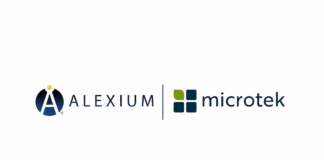Additives, bio-based building blocks and cooling features make foams more versatile, effective bedding components
Polyurethane foams and their viscoelastic and high-resilience siblings have proven their flexibility in sleep products constructions, ushering in the age of specialty bedding, giving rise to hybrid mattresses and driving the industry-reshaping launch of boxed beds.
Here we’ll examine how foams are being used in today’s bedding and other trends in the category.
This primer will get you up to speed on foams in just a few minutes. For a deeper dive, check out Julie A. Palm’s report, “The New Fundamentals of Foams,” in our sister publication BedTimes at BedTimesMagazine.com/2019/10/The-New-Fundamentals-of-Foams.
Benefits of foams: Polyurethane foams provide cushioning comfort and sturdy support in mattresses, and can be easily compressed, roll packed and boxed for easy shipping and delivery. Viscoelastic (memory foam) is known for its enveloping feel and ability to reduce motion transfer.
Types: Conventional PU foam often is found in mattress cores Viscoelastic and high-resilience versions generally are used in transition, comfort and quilt layers.
Downsides: Foams are prone to body impressions.
Other foam trends
Still cool: The cooling trend throughout bedding started with makers of viscoelastic foams, which, in their original versions, tended to sleep “hot.” Gels and phase-change materials help to cool foams, as do open-cell structures and mechanical means like contour cutting waves and channels or incorporating pinholes and perforations.
Not boxed in: The first boxed beds were all-foam models, and as more and more players entered the category, they pushed for foam innovations that would distinguish them from their competitors, making the category extremely price sensitive, foam suppliers say. The need to create foams that stand up to the manufacturing requirements of compressing, roll packing and boxing mattresses also has driven improvements in durability and resiliency.
Changing roles: With the rising popularity of boxed beds marketed by e-commerce specialists, many foam suppliers have taken on additional roles as mattress manufacturers and fulfillment centers, making finished mattresses and shipping them for online brands. Having mastered those capabilities, some foamers, such as Future Foam, now offer private-label mattress lines to retailers. NCFI recently acquired the BedInABox brand, cementing its role as both a supplier and a manufacturer.
Add-ons and mix-ins: PU foams, and viscoelastic in particular, are very accepting of additives, including fragrances and materials such as copper, silver, graphite and charcoal that create a fresh scent, absorb odors, regulate temperature, reduce moisture or keep the mattress clean and hygienic. Latexco U.S. Holdings LLC is using carbon fiber technology for cooling. Other ingredients have reported health effects, such as reducing inflammation or improving circulation in sleepers. PU foams also can be coated with phase-change materials and other ingredients.
Going greener: In an effort to make foams more sustainable, some foamers are adding bio-based polyols to the mix. Exactly how much of the petro-polyols in foams are replaced by bio-based polyols varies widely.
Shifting layers: Memory foams, with their conforming feel and ability to reduce motion transfer between sleepers, have long been used in top comfort layers but also are being found in transition layers, providing a different feel and level of support for sleepers.
New formulations: Future Foam is among the foamers experimenting with formulations to create components that exhibit the best characteristics of traditional PU, visco and HR foams, as well as latex. For example, Future Foam’s HyPURgel pairs the conforming softness of visco with the support and resilience of an HR foam. NCFI offers its family of PUL foams that mimic the properties of latex but at a lower cost.
Getting certified: CertiPUR-US, a polyurethane foam certification program, requires that sleep products manufacturers that incorporate CertiPUR-US-certified foams into their bedding products and retailers that sell products containing certified foams cannot use the CertiPUR-US name or logo in marketing or advertising without registering with the organization. In 2019, CertiPUR-US added the requirement that bedding manufacturers and retailers that offer products containing CertiPUR-US-certified foams take a short course in order to be registered with the program. For more information, visit CertiPUR.us.








